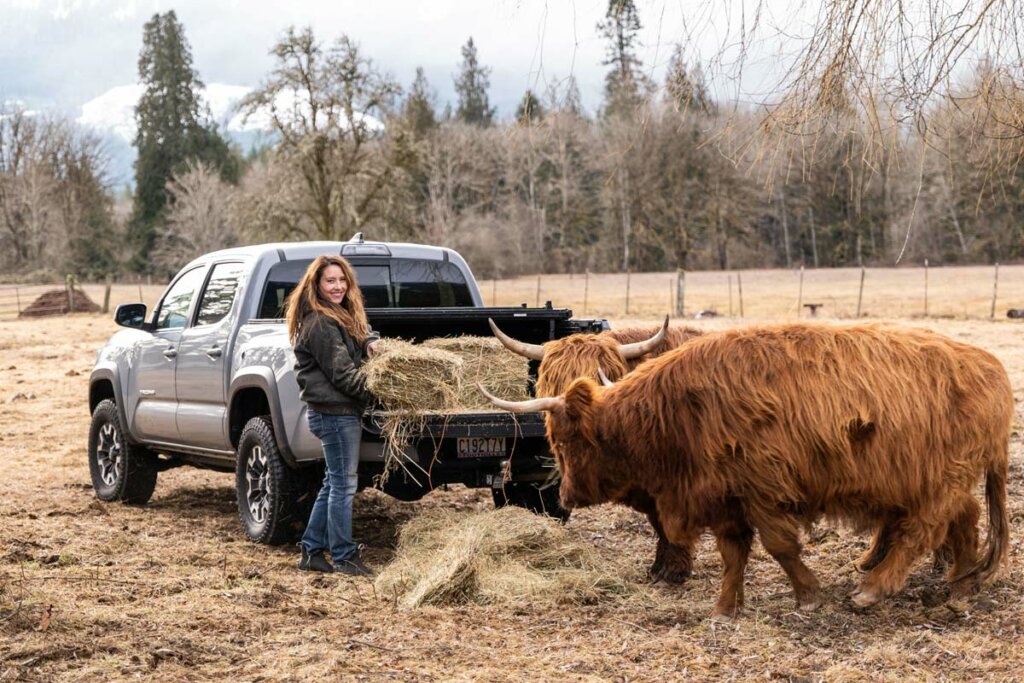With feed costs rising, we’re all looking for ways to supplement them. Listen to today’s podcast with Deanne Converse as we discuss methods for offsetting feed costs for all types of livestock, from cattle to backyard chickens!
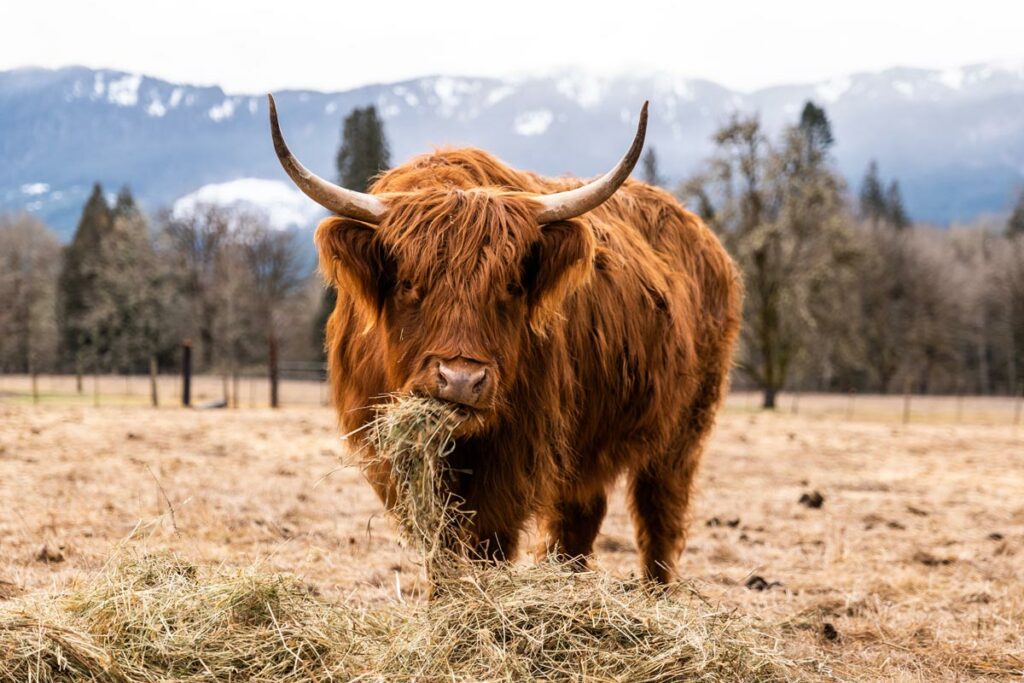
Enjoy today’s episode (#427) of the Pioneering Today Podcast. If you’d like to listen to more of my podcasts, check out the Pioneering Today Podcast archives here.
About Deanne Converse
Native to the Pacific Northwest, Deanne Converse is passionate about sharing how to grow and feed livestock top-notch nutritious food that anyone can sustainably produce on any scale (balcony to full farms).
Why be caught up having to choose to raise livestock or not because the cost or quality of available commercial feeds or hay does not fit your budget? With alternative sustainable feeds, anyone can supplement their current feeding regimen or completely replace it permanently.
The health benefits for your livestock are worth the time investment and not just ‘one more thing’ in an already busy day. You are what your food eats. Establishing alternative sustainable feeds will fit into any budget and is something you can perpetuate year to year.

What is Fodder?
In terms of feeding livestock, fodder is something you would grow (or find), cut and bring to your livestock as feed.
For example, hay would be considered fodder since it is something that’s grown, cut and brought to the animals.
How is Fodder Different From Foraging?
Forage, in terms of feed for livestock, is letting your animals roam to find their food (whether you planted it or it’s growing natively). Essentially, the difference between forage and fodder is whether it’s brought to the animal or the animal “forages” for itself.

Types of Fodder
There are many different types of fodder. This is great because most of us can’t grow and store enough hay for our livestock for an entire year.
In the past five years, our hay costs have tripled for the same tonnage. I know many people are feeling this pinch in the cost of feed, so let’s discuss other types of fodder that may be easier for people to grow.
Sprouted Greens
One of the first types of fodder that comes to mind is sprouted greens.
To grow greens:
- Soak your grains overnight. This can be barley, wheat, buckwheat, peas or sunflowers.
- Drain off the water and place the seeds in a growing tray about 1/2 inch thick.
- Rinse them twice daily until they’ve sprouted and grown to the short grass stage, about 4-6 inches long.
Growing sprouted greens doesn’t take much space, and anyone can do it. Deanne shares that just as hay costs have risen, so has the price of seed, so this isn’t an affordable solution for supplementing livestock feed.
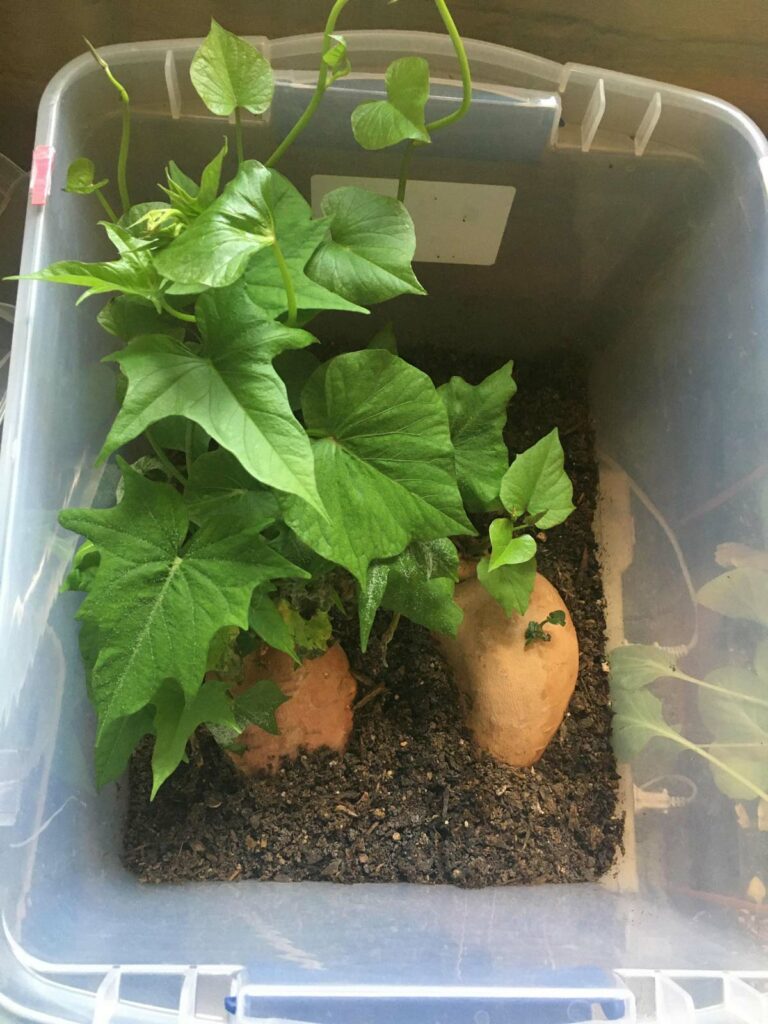
Sweet Potato Vines
Another option for growing forage is sweet potato vines (Ipomoea batatas). These are not the edible potatoes we all think of when we hear sweet potato. These vines look beautiful grown for ground cover and can even be grown indoors as a houseplant. You can harvest the vines as fresh fodder to feed livestock or make silage from them for winter feed.
Many animals love to eat sweet potato vines: horses, rabbits, pigs, chickens, cattle, sheep… and any of your ruminant animals.
The vines that aren’t consumed fresh can be ensiled. Ensiling is when you make silage out of the vines. Essentially, you’re fermenting the sweet potato vines in an anaerobic environment.
How to Ensile Forage
- Get a large barrel that has the ability for an anerobic environment.
- Layer the sweet potato vines with sugar or livestock molasses (like lasagna).
- Cover the barrel to create an anaerobic environment.
- Allow the vines to ferment. Then, feed the silage to your livestock throughout the winter.
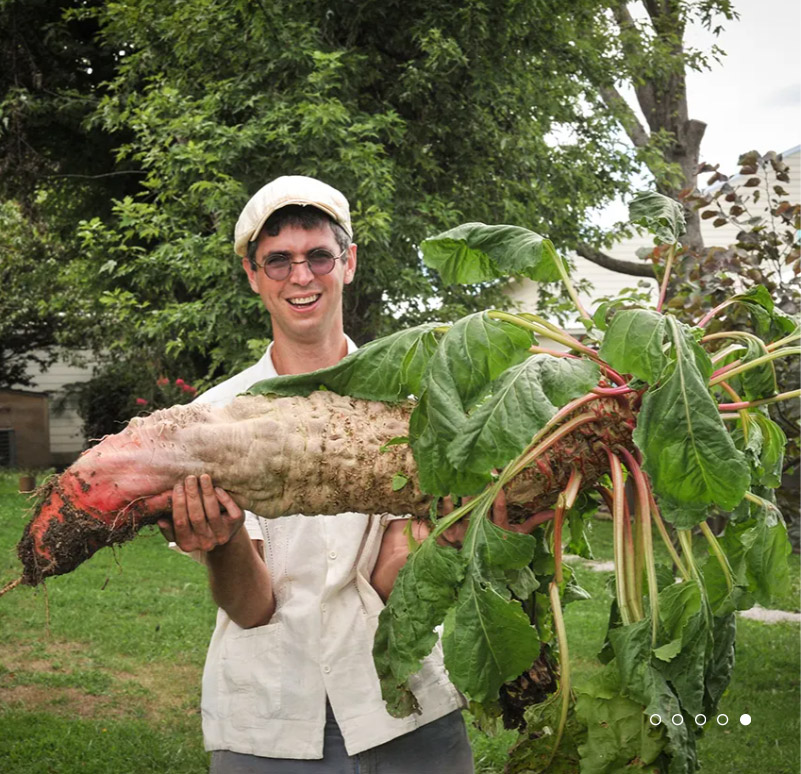
Mangel Beets
Mangel beets are a historic feed source up until the 1950s. The beet can grow up to 20-30 pounds each. Both the greens and the beet are edible. They’re highly nutritious, and you can grow 500 pounds of feed in a 100-foot row.
In terms of space and yield, the Mangel Beets are something to pay attention to. Especially since they are a root crop that can be stored through the winter.
Here in the PNW, I can actually mulch many of my root crops well and use the ground as a makeshift “root cellar.” Keeping them in the ground until I’m ready to harvest.
However, keep in mind that if you deal with multiple freezes and thaws, the beets may rot if left in the soil. To prevent this, Deanne recommends digging a hole in the ground, lining it with a tarp, adding the harvested beets and covering them with mulch to protect from freezing. This is another great option for a makeshift root cellar.
Finally, you must store mangel beets for three months before you feed them to your livestock. This is to allow the sugar conversion within the beet to occur. If you feed them to your livestock immediately, your livestock will likely have scours.
Here are Deanne’s recommended sources for Mangel Beet seeds:
- Beet Seeds – Red Mammoth Mangel | Heirloom Root Vegetable Beet Seed | True Leaf Market Seed Company (type Mangel beet in the search to see if it’s back in stock)
- Red Mammoth Fodder Beet – Victory Seeds® – Victory Seed Company
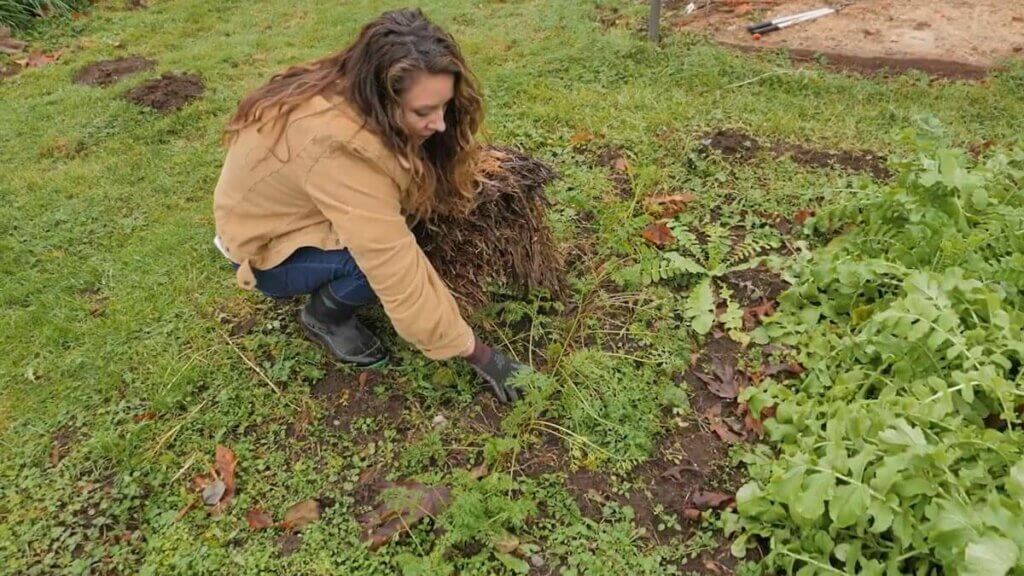
Carrots, Turnips & Rutabagas
Another option for growing fodder for livestock is to plant turnips and rutabagas in the pasture, where you’ll have your livestock in the fall. Plant a late summer crop of these root veggies, and they’ll be ready for your livestock in early winter.
They’ll actually eat back the greens of these veggies, and the greens will grow back, or the livestock will dig up the crops and eat them as well. This makes for great pasture management as it naturally aerates the soil and adds minerals and nutrients at the same time.
You can grow a crop of carrots for your livestock as well. Since carrots are great storage crops (and can be left in the ground), you can feed the livestock the turnips and rutabagas first (not great for long-term storage), then feed them the mangel beets (after they’ve cured for three months), then you’ll still have a nice supply of carrots once you’ve worked your way through the beets.
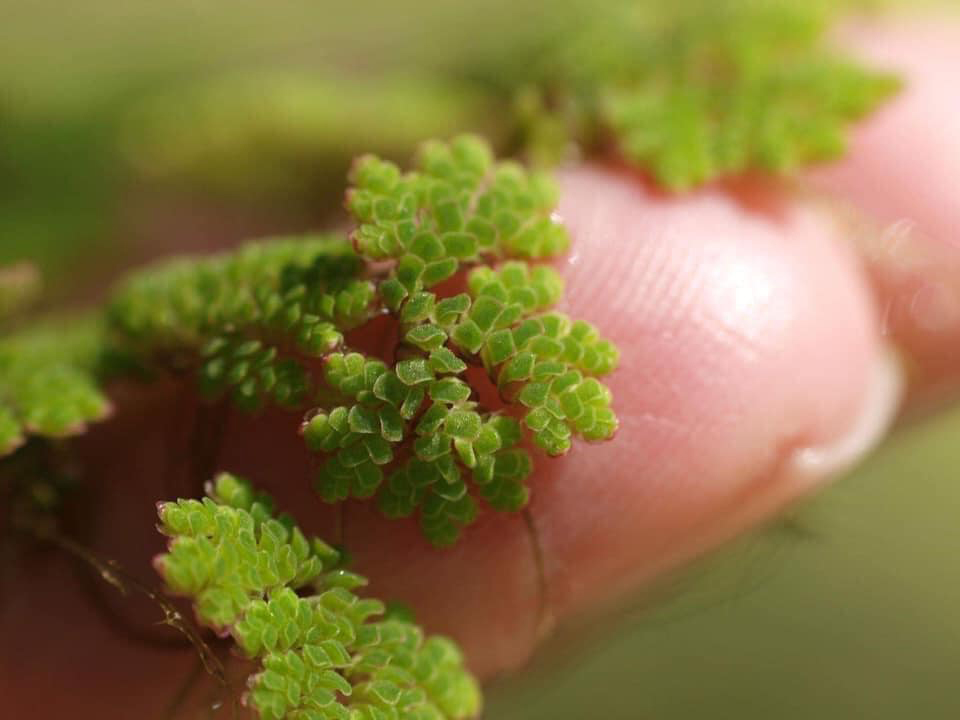
Azolla
Azolla is a genus of seven species of aquatic ferns in the family Salviniaceae. Deanne mentioned she likes to start them in a kiddie pool near her chickens and ducks (see image below) and then just scoop off the Azolla with a net, tossing it to her poultry for feed.
Deanne also says Azolla is great for feeding dairy animals because it increases their milk production and is higher in nutrition than alfalfa.
Her recommendation when buying Azolla is to look for Azolla caroliniana. It is readily available online on eBay. One word of caution: make sure you’re not purchasing Duck Weed (some Azolla comes as a mixture with Duck Weed). Certain states have outlawed growing Duck Weed because it can be invasive.
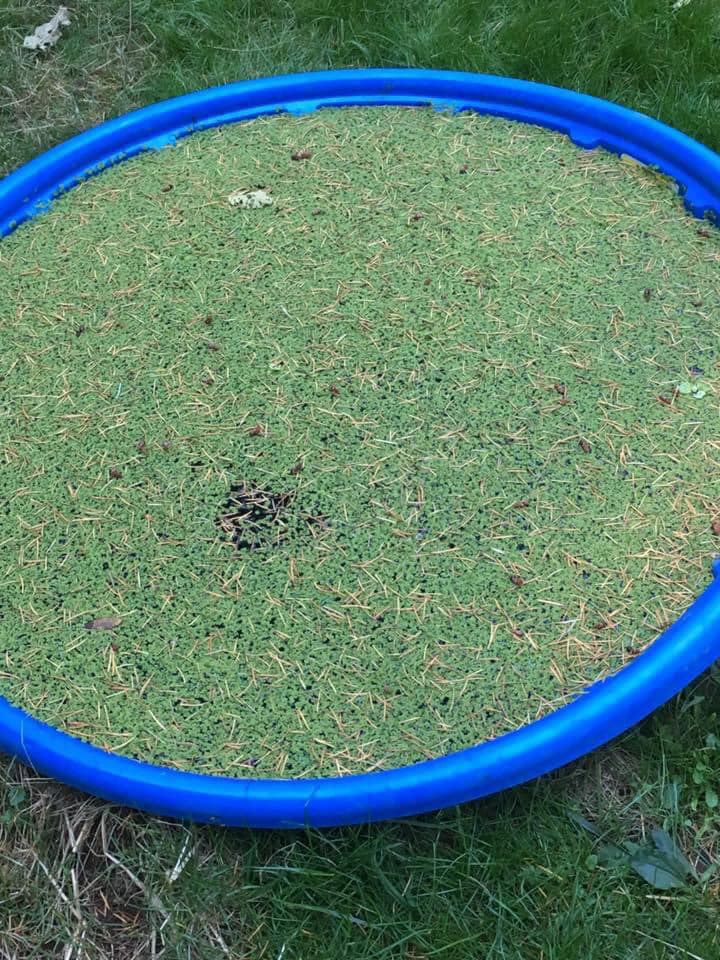
Tree Hay (Tree Fodder)
Tree hay is an option that most people don’t realize is viable for animal feed. About three years ago, there was a drought, and hay feed costs skyrocketed. However, there was still top-notch feed with the leaves high up in the trees that could be fed for livestock.
Best Trees for Fodder
“Tree hay” is the leaves of the tree. Aspen, Cottonwood, Birch and Mulberry trees are all wonderful for tree fodder. Feeding these leaves to your animals is just like feeding grass hay, meaning you don’t need to be concerned with how much they’re getting.
To feed livestock tree fodder, harvest the branches with the leaves in early Autumn, allow them to dry, then store them until you’re ready to feed your livestock. Deanne mentions that hanging them from the rafters of your barn is a fantastic way to store them.
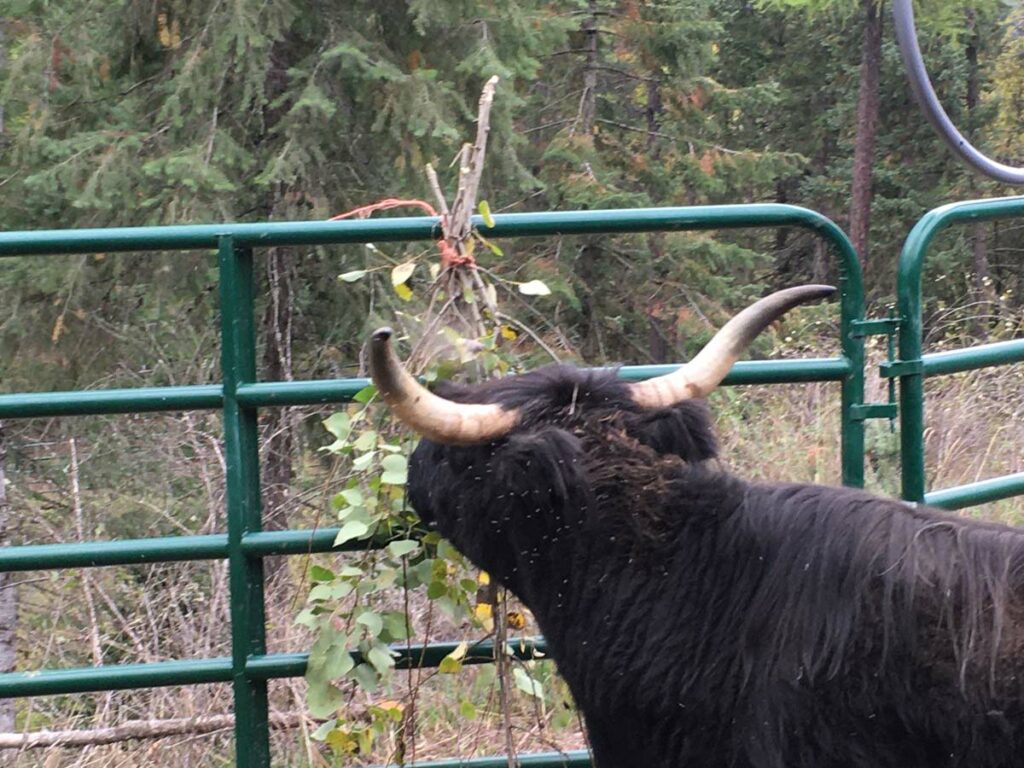
Cautions of Tree Fodder
Some trees require extra care when feeding your animals. Willow, Black Locust and Maple are a few:
- Willow: Though Willow trees are a great source of feed for your livestock, they are high in tannins, so they shouldn’t be the only source of fodder you feed. Willow is fantastic for getting rid of parasite loads in animals, so making it available to them is fantastic, but in limited quantities.
- Black Locust: Also called tree alfalfa, it must be foraged earlier in the year; otherwise, the tree is very high in tannins.
- Maple: It’s a great option, except for horses. Red Maple leaves are toxic for horses.

Where to Find Deanne Converse
If you want to learn more about growing fodder for your animals, Deanne has an eight-hour class where you can learn about each type of fodder and how to grow it. She’ll also be speaking at the Modern Homesteading Conference on this topic as well. Be sure to grab your tickets and come see us in North Idaho!
You can also find Deanne on her website, Converse Star Ranch. You can also find her on Facebook @de.converse to find out when she’ll be hosting her upcoming classes, or shoot her an email [email protected].
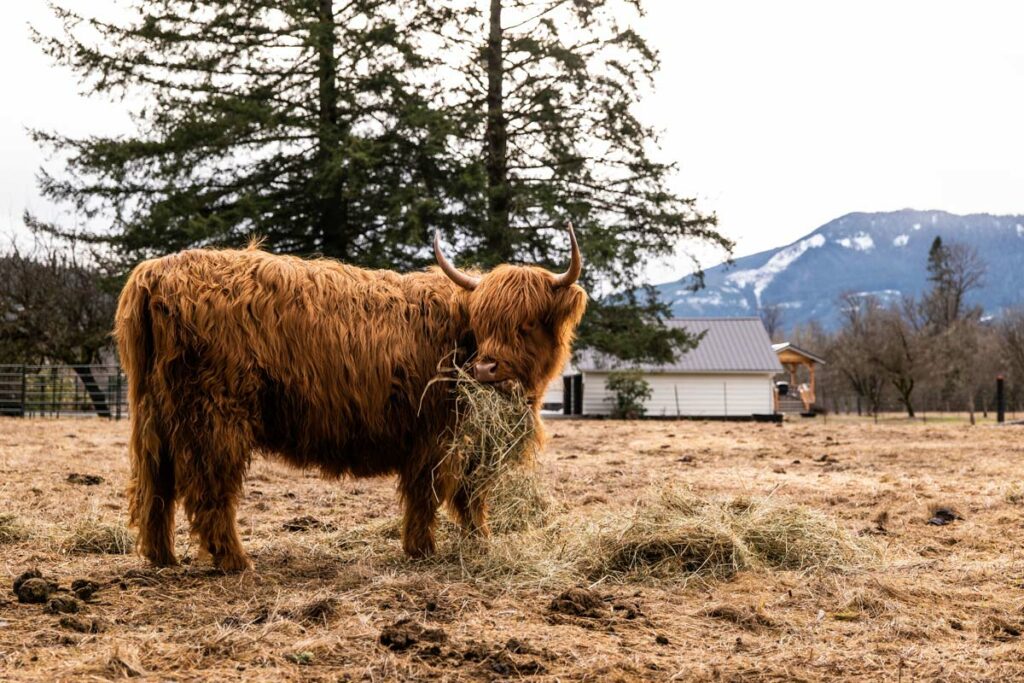
Other Posts You May Enjoy
- How to Raise Ducks for Eggs
- Regenerative Agriculture Practices (On a Small Scale)
- Pasture Rehabilitation – How to Improve Pasture Grass
- Stocking Up on Animal Feed (+ How Much to Feed Animals)
- Raising Grass-Fed Beef – What to Know on Butchering Day
- Behind-The-Scenes of a Cow Herd
- How to Keep Animals Cool in Hot Weather
[fusebox_transcript]
